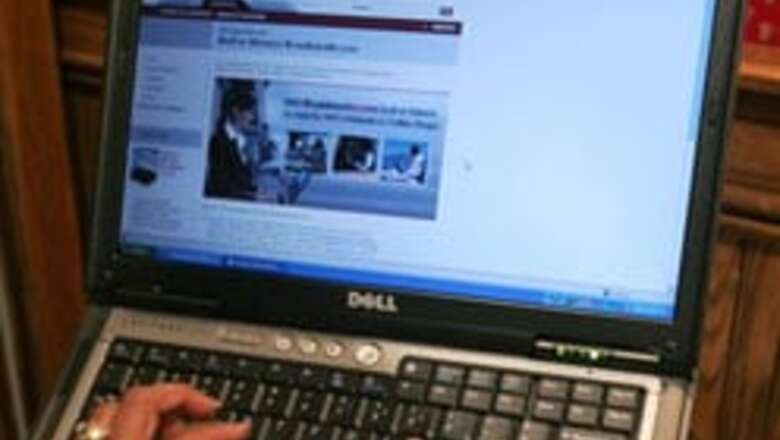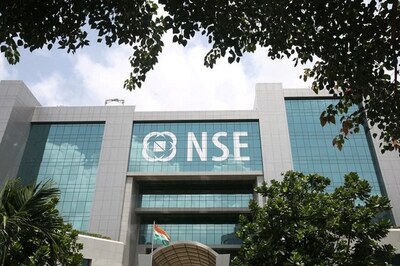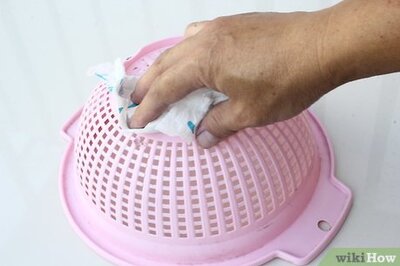
views
Dallas: It wasn’t too long ago that Dell Inc was riding high on the success of its patented direct-sales model to consumers and businesses, boldly predicting during an April 2005 meeting with analysts that the computer maker would soon swell from $50 billion in revenue to $80 billion.
But then the PC market slowed, profits tumbled and share prices took a hit. Complaints began to mount about its customer service. Dell, meanwhile, continued doing what it had been doing.
Then came last week, a stretch Dell would surely rather forget. Dell issued the largest electronics recall in US history, reported dismal second-quarter earnings and acknowledged a probe by federal investigators for unspecified accounting issues.
Suddenly, the world’s largest PC maker is looking vulnerable instead of invincible.
So what happens next to the squeaky-clean company built on efficiency, the one that used to inspire fear in competitors with its low prices and sheer size?
It still has the ingredients for success, analysts said, but desperately needs some adjustments.
”It’s not really as if disaster has struck,” believes Roger Kay, an analyst with Endpoint Technologies Associates. ”It’s just that they’ve had a run of bad news.”
The latest streak began last Monday, when Dell and the Consumer Product Safety Commission issued a voluntary recall of 4.1 million notebook batteries made by Sony Corp. because they could overheat and catch fire.
Three days later, Dell said second-quarter profit fell 51 percent, to $502 million from $1.02 billion in the same period a year ago. Sales edged up 5 percent to $14.1 billion, to meet already lowered Wall Street sales and earnings per share expectations.
Dell’s woes certainly seem out of place considering that last week, chief competitor Hewlett-Packard Co. easily beat Wall Street’s expectations for third-quarter profits and raised its fourth-quarter and full-year guidance.
”It’s kind of what HP has just risen to, yet the perception is that HP is on the mend and Dell is in decline,” said Kay. ”What people forget is that every day Dell is selling lots of computers to lots of people – and they’re not blowing up.”
Chief Executive Officer Kevin Rollins, repeating an explanation he’s been delivering for a year now, again blamed overly aggressive pricing, a slowing marketplace and component prices that weren’t lowering as expected.
He also assured investors that steps are being taken to remedy the problem. For example, Dell has funneled millions to improve its customer service and has begun offering chips made by both Intel Corp. and Advanced Micro Devices Inc.
PAGE_BREAK
The first visible signs of trouble arose in Dell’s August 2005 second-quarter earnings report, when the company’s revenue came in nearly $300 million below Wall Street forecasts.
At the time, Rollins blamed the shortfall on US consumers who stuck with cheap, low-end desktops and laptops instead of upgrading to pricier, more profitable models. ”That just got away from us. We stumbled there, but we’ll get that back in line,” Rollins said then.
The company stopped issuing earnings forecasts to investors, so just when Dell can turn the corner seems to be anyone’s guess.
Analysts remain puzzled, if not mildly frustrated, that changes haven’t happened faster.
”It’s the same message that they’ve been talking about for a couple of quarters,” said Mark Margevicius, a research director at Gartner Group. ”What’s up with Dell? Because we can’t figure it out and it doesn’t seem like they can figure it out.”
In a report, analyst Cindy Shaw of Moors & Cabot said the dismal earnings have reinforced her firm’s view that Dell’s problems are company specific and that a turnaround will be harder and take longer than anticipated.
Part of the problem, industry observers say, has been Dell’s dependence on the US market, which still accounts for the bulk of its business but has seen slowing demand for computers for years now.
In emerging markets such as China and India, meanwhile, Dell’s direct sales model has struggled to gain acceptance in cultures that prefer buying from vendors instead of over the phone or on the Internet.
Tweaking the model that helped Dell become the world’s number one PC vendor would certainly help, said Shaw Wu, an analyst with American Technology Research, whose firm still rates Dell shares as a buy.
Wu said Dell could learn a thing or two from Apple Computer Inc. and its success with retail stores. He said the stores have been a boon for building important, lasting customer relationships – something Dell could conceivably capitalize on too.
Though Dell is experimenting with two retail stores – one in Texas and one in New York – it’s unclear what the company’s long-term retail plans might be. And unlike most retail operations, shoppers can look at Dell products but can’t walk out of its store with anything.
”Just selling to a Web site, that’s not going to cut it,” said Wu.
PAGE_BREAK
Company executives have painted the SEC probe, which it revealed toward the bottom of Thursday’s earnings report, as an informal investigation which began in August of 2005.
”We’re complying with that informal investigation,” Rollins said in a call with reporters. ”That’s about all we know. We don’t think there are going to be any issues that are material that we’re going to have to worry about.”
Analysts said there weren’t enough details to know if the probe is cause for concern.
And for the most part, they believe Dell can regain its past glory if it can make more changes, some of which are already under way.
The company is spending $150 million this fiscal year to improve customer service by hiring more support employees and through programs such as DellConnect, which lets Dell technicians remotely fix computer issues for free. Rollins has called the initiative ”a top priority for us for the long term.”
And Dell also has expanded a business relationship to start offering processors from AMD in some desktop PCs beginning next month.
Analysts welcomed the bolstered Dell-AMD alliance, though some questioned what took so long.
In recent years, AMD successfully narrowed the performance gap with Intel, and even held a performance advantage until very recently.
Regardless, offering chips from both companies should help Dell appeal to a broader selection of customers.
”There is always going to be a segment of the market that wants to use AMD, but Dell shut themselves out of 25 percent of the market,” Wu said. ”HP and some of these other guys have sort of had a free ride.”
Most other computer manufacturers have long offered chips made by both Intel and AMD.
A lot of Dell’s dilemmas have probably been exaggerated by its standing as a technology bellwether, a company whose every move is scrutinized by the financial community.
”The perception around Dell that the sky is falling is totally unfounded,” said Margevicius, an analyst. ”Are they a company that is having issues? Sure. The business is changing around them and they haven’t quite responded yet.”




















Comments
0 comment